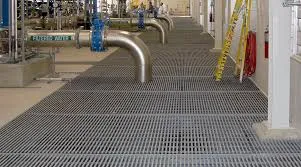
-
 Afrikaans
Afrikaans -
 Albanian
Albanian -
 Amharic
Amharic -
 Arabic
Arabic -
 Armenian
Armenian -
 Azerbaijani
Azerbaijani -
 Basque
Basque -
 Belarusian
Belarusian -
 Bengali
Bengali -
 Bosnian
Bosnian -
 Bulgarian
Bulgarian -
 Catalan
Catalan -
 Cebuano
Cebuano -
 China
China -
 China (Taiwan)
China (Taiwan) -
 Corsican
Corsican -
 Croatian
Croatian -
 Czech
Czech -
 Danish
Danish -
 Dutch
Dutch -
 English
English -
 Esperanto
Esperanto -
 Estonian
Estonian -
 Finnish
Finnish -
 French
French -
 Frisian
Frisian -
 Galician
Galician -
 Georgian
Georgian -
 German
German -
 Greek
Greek -
 Gujarati
Gujarati -
 Haitian Creole
Haitian Creole -
 hausa
hausa -
 hawaiian
hawaiian -
 Hebrew
Hebrew -
 Hindi
Hindi -
 Miao
Miao -
 Hungarian
Hungarian -
 Icelandic
Icelandic -
 igbo
igbo -
 Indonesian
Indonesian -
 irish
irish -
 Italian
Italian -
 Japanese
Japanese -
 Javanese
Javanese -
 Kannada
Kannada -
 kazakh
kazakh -
 Khmer
Khmer -
 Rwandese
Rwandese -
 Korean
Korean -
 Kurdish
Kurdish -
 Kyrgyz
Kyrgyz -
 Lao
Lao -
 Latin
Latin -
 Latvian
Latvian -
 Lithuanian
Lithuanian -
 Luxembourgish
Luxembourgish -
 Macedonian
Macedonian -
 Malgashi
Malgashi -
 Malay
Malay -
 Malayalam
Malayalam -
 Maltese
Maltese -
 Maori
Maori -
 Marathi
Marathi -
 Mongolian
Mongolian -
 Myanmar
Myanmar -
 Nepali
Nepali -
 Norwegian
Norwegian -
 Norwegian
Norwegian -
 Occitan
Occitan -
 Pashto
Pashto -
 Persian
Persian -
 Polish
Polish -
 Portuguese
Portuguese -
 Punjabi
Punjabi -
 Romanian
Romanian -
 Russian
Russian -
 Samoan
Samoan -
 Scottish Gaelic
Scottish Gaelic -
 Serbian
Serbian -
 Sesotho
Sesotho -
 Shona
Shona -
 Sindhi
Sindhi -
 Sinhala
Sinhala -
 Slovak
Slovak -
 Slovenian
Slovenian -
 Somali
Somali -
 Spanish
Spanish -
 Sundanese
Sundanese -
 Swahili
Swahili -
 Swedish
Swedish -
 Tagalog
Tagalog -
 Tajik
Tajik -
 Tamil
Tamil -
 Tatar
Tatar -
 Telugu
Telugu -
 Thai
Thai -
 Turkish
Turkish -
 Turkmen
Turkmen -
 Ukrainian
Ukrainian -
 Urdu
Urdu -
 Uighur
Uighur -
 Uzbek
Uzbek -
 Vietnamese
Vietnamese -
 Welsh
Welsh -
 Bantu
Bantu -
 Yiddish
Yiddish -
 Yoruba
Yoruba -
 Zulu
Zulu
Effective FRP Solutions for Controlling Moisture in Various Applications
Understanding FRP Moisture Traps A Key Element in Composite Material Applications
Fiber Reinforced Polymer (FRP) is a versatile and robust composite material widely used in various industries, including construction, automotive, aerospace, and marine applications. However, one of the challenges associated with FRP installations is moisture intrusion. This is where FRP moisture traps come into play, acting as a crucial mechanism to mitigate the detrimental effects of moisture on the integrity and longevity of FRP materials.
Understanding FRP Moisture Traps A Key Element in Composite Material Applications
The design of FRP moisture traps typically includes strategically placed drainage systems, barriers, and ventilated cavities. These components work together to channel accumulated moisture away from critical areas, allowing for proper drainage and reducing the risk of water retention. Moreover, the use of breathable materials in the construction of these traps enables vapor to escape while preventing the invasion of liquid water, thereby striking a balance between maintaining the structural integrity of the FRP and managing environmental conditions.
frp moisture trap

Another important consideration when implementing FRP moisture traps is their compatibility with other materials used in composite assemblies. Selecting the right materials for the moisture trap is essential to ensure that they do not introduce new issues, such as galvanic corrosion when coupled with metal elements or compatibility problems with the FRP itself. Therefore, engineers and designers must carefully evaluate their choices to create an effective moisture management solution.
In addition to their practical applications, FRP moisture traps highlight the importance of preventive maintenance in extending the life of composite structures. Regular inspections and maintenance checks can help identify potential moisture-related problems before they escalate. This proactive approach allows for timely interventions, preserving the performance and aesthetic of the FRP installations.
As the demand for FRP continues to grow due to its superior strength-to-weight ratio and resistance to environmental degradation, the importance of moisture management systems like FRP moisture traps will only increase. Ultimately, these systems represent a vital aspect of composite material engineering, ensuring that FRP materials perform optimally throughout their intended lifespan.
In conclusion, FRP moisture traps are essential components in the effective management of moisture within composite structures. By understanding how these systems function and the role they play in protecting the integrity of FRP materials, engineers and designers can better address the challenges associated with moisture intrusion. With proper design, installation, and maintenance, FRP moisture traps can help enhance the longevity and durability of composite structures, making them a valuable investment in a wide range of industries.









